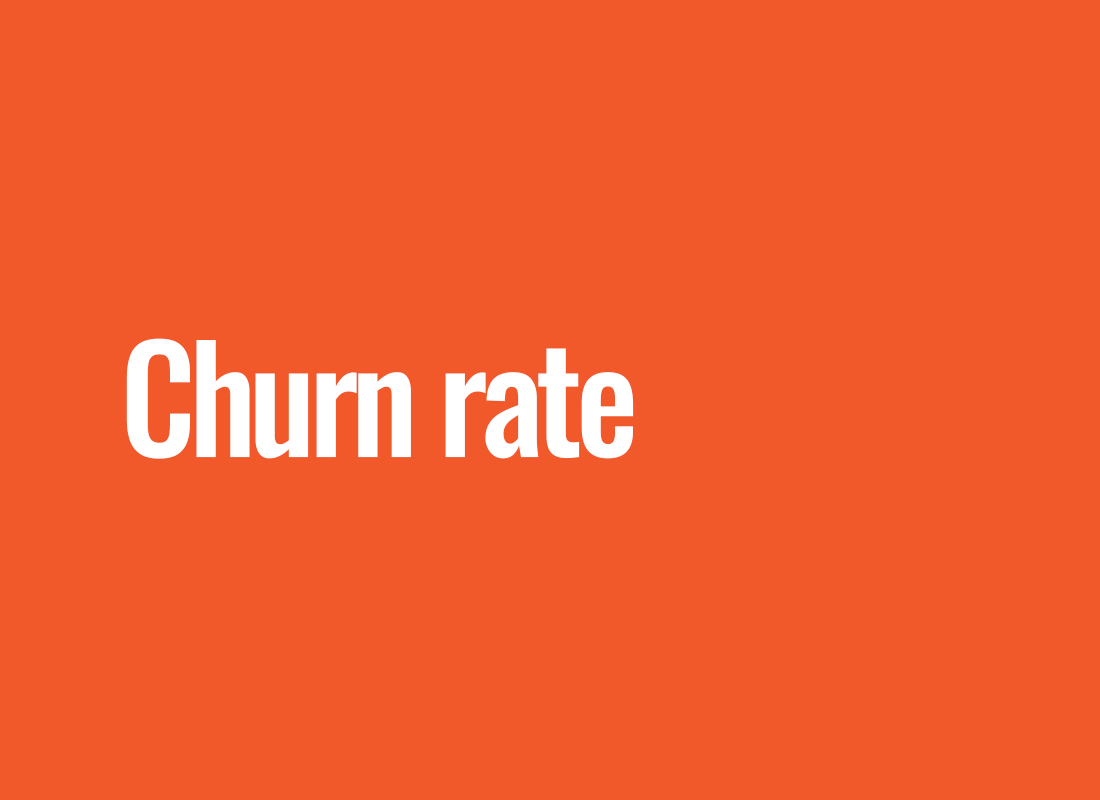Churn rate
Churn rate, also known as turnover index or customer attrition rate, represents the percentage of customers or users who stop using a product or service within a specified time frame. This indicator is a vital tool for businesses in the e-commerce, business, IT, and marketing sectors as it allows them to assess the effectiveness of retention activities and understand why customers are leaving. A higher churn rate often signals problems with the product, customer service, or marketing strategy. In today's digital world, where acquiring new customers can be costly, understanding and minimizing the churn rate can be key to enhancing profitability and business sustainability.
Key Aspects of the Churn Rate
Churn rate is simple to calculate, but its interpretation can be more intricate. It's determined by dividing the number of customers who left during a given period by the total number of customers at the beginning of that period. While this seems straightforward, various factors influence this rate. For instance, a customer might stop using a service due to loss of interest, technical issues, or dissatisfaction with customer service. Thus, it's essential for companies not just to monitor this rate but also to analyze the reasons behind customer departures.
Why is this so crucial? Modern business, especially in e-commerce and technology, relies on building lasting relationships with customers. The cost of acquiring a new customer is often much higher than retaining an existing one. Therefore, the churn rate can serve as a warning sign of potential issues in customer relations. If a company notices an increase in the churn rate, immediate action should be taken to identify and address the problem.
Practical Calculations in the Business World
Though churn rate might seem like a mere formula, it has diverse applications in real-world scenarios. Grasping this metric and responding to it appropriately can be pivotal to many businesses' success.
1. Subscription Company
Let's say you run a streaming service offering movies and series. At the beginning of the month, you had 1000 subscribers, but by its end, this number dropped to 950. Your turnover rate is 5% (50/1000). This means you need to acquire at least 50 new subscribers next month just to maintain your customer base, let alone grow it.
2. Online Store
You operate an online clothing store. Observing customer behavior on your site, you notice many register and make an initial purchase but don't return afterward. If 20% of your new customers don't make subsequent purchases, it indicates a 20% churn rate among new customers. This might suggest that, while the first impression is positive, something deters them later—possibly product quality, delivery time, or the returns process.
3. Mobile App
You create a finance management app. After some time, you observe that many users who downloaded your app stop using it within days. If out of 5000 new users, 1000 cease using the app within the first week, your churn rate is 20%. This could imply that the interface is non-intuitive, the app crashes, or it doesn't meet user expectations.
Understanding the Customer is Key
Grasping churn rate and acting on this knowledge can be pivotal for your business's success. However, merely calculating the metric isn't enough. The most crucial aspect is understanding why customers leave and taking measures to retain them.
For many companies, the solution might be conducting surveys among customers who abandoned the product or service. This can help comprehend what went wrong and what changes are necessary. Another approach is data analysis, looking for patterns in customer behavior.
In the digital age, where competition is just a few clicks away, retaining customers is as vital as acquiring them. Churn rate isn't just a metric; it's also a tool enabling companies to grow sustainably.




